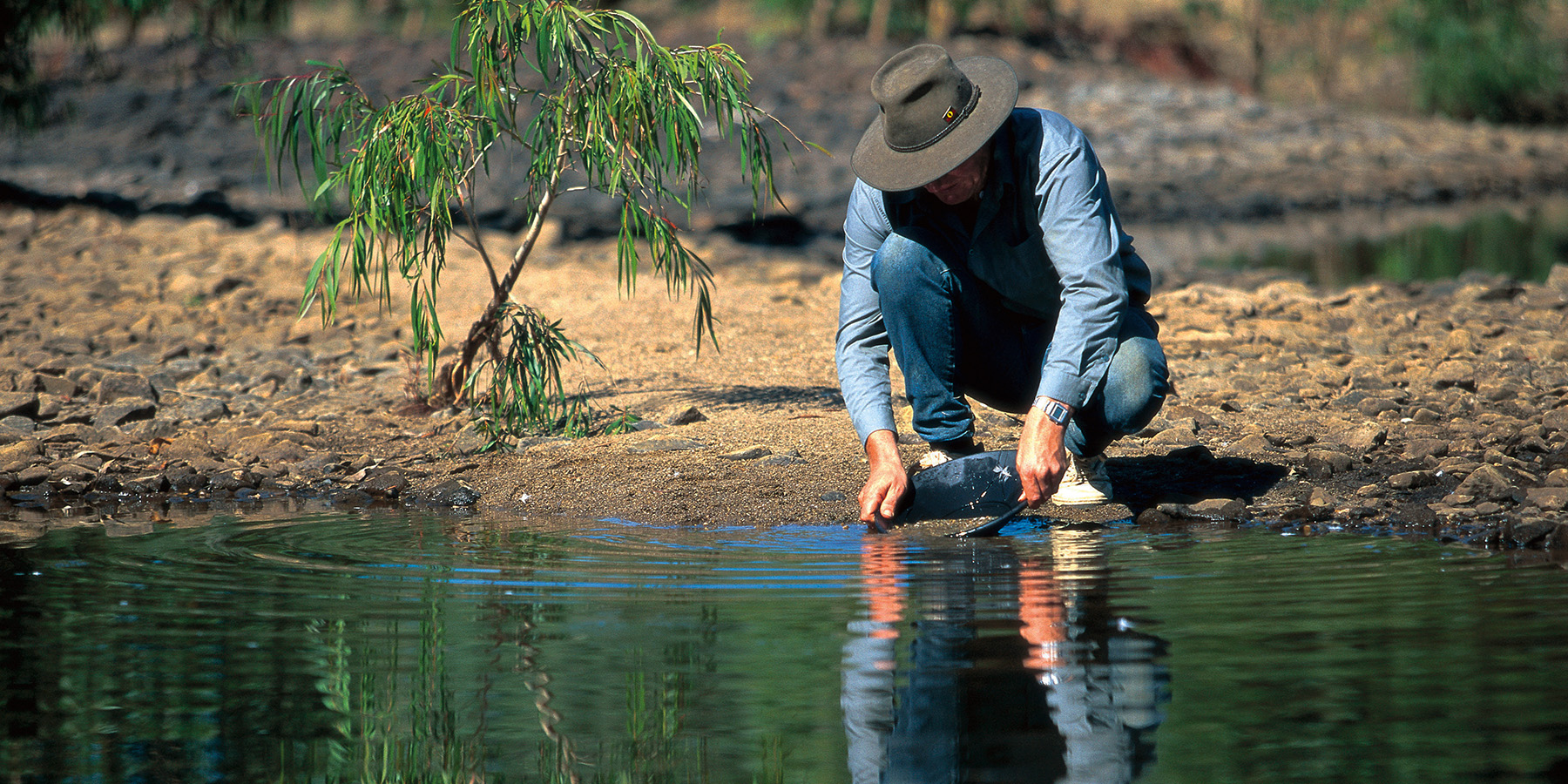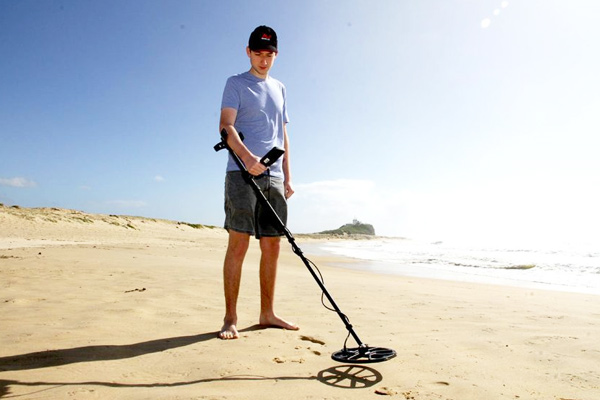
Tourism and Events Queensland
Tips & Resources
A collection of useful and interesting fossicking resources
In Australia and New Zealand, fossicking is prospecting, especially when carried out as a recreational activity. This can be for gold, precious stones, metals, fossils, etc. by sifting through a prospective area.
The Mining Act (SA) defines it as the gathering of minerals as a recreation and without the intention to sell the minerals or to utilise them for any commercial or industrial purpose. Fossicking is undertaken using hand operated equipment. Mechanically operated equipment is not generally used. It does not include the gathering of minerals by any means involving disturbance of land or water by machinery or explosives.
Basic equipment includes geological and topographic maps, a geological hammer, pick, shovel, sieve, gold pan, and magnifying glass. More sophisticated equipment may include a metal detector, manual cradle rocker or sluice box.
In Australia and New Zealand, the term “fossicking” has an extended use meaning to “rummage”.
In Australia, “fossicking” is protected by a number of laws which vary from state to state. In some states such as Queensland, fossickers must obtain a licence but in others, no licence is required.

Where you can fossick
Provided you have a fossicking licence and the written permission of the landowner, you may fossick on most land throughout the state.
However, fossicking is not permitted in:
- national parks, conservation parks and high preservation areas
- nominated waterways of wild river areas
- state forests and timber reserves, except in the declared fossicking areas or general permission areas (see below)
- other areas declared by regulation (these will be signposted).
If in doubt, check with the local mining registrar.
Source: Queensland Government
Source: Garret Metal Detectors
Metal Detecting: “using a metal detector to hunt for metallic objects such buried coins, lost jewellery or archaeological artefacts”

Source: The Outback Prospector
Getting Started
A Beginner’s Guide to Metal Detecting – What to Know
The term ‘metal detecting’ has a lot of negative connotations. More often than not, people conjure images of the security tool found in establishments like airports, schools, and private buildings to determine whether a visitor is carrying a weapon. However, metal detecting isn’t only for security and protection. It can be a hobby, too.
Naturally curious folks can find metal detecting highly enjoyable. Why? Because it lets you unearth items that can be valuable. You may discover something that hasn’t seen the light of day in years. You may find coins that you can add to your collection. You may even discover jewellery or gold nuggets for your financial gain.
One of the fascinating metal detecting anecdotes dates back to 2009 when a man unexpectedly unearthed the largest known Anglo-Saxon treasure hoard in a field in Staffordshire, England. The hoard was revealed to include over 1,500 pieces of treasure, composed of several kilograms of gold, silver, and jewelled items.
Metal detecting isn’t so bad, is it? If you’re interested in taking it up as a hobby, here’s a handy guide … read more
Source: Prospectors Patch
Getting Started with Metal Detecting – Everything You Need to Know
For a lot of folks, they hear the term ‘metal detecting’ and automatically imagine the crazy old guy they saw walking up and down the shoreline on their beach vacation last summer.
But when you look at this surprisingly addictive hobby, there’s so much more to it than just looking funny at the beach.
In this guide, you’ll learn what this hobby is all about, why it has become so popular, what you’ll need to get started, and so much more!
In this guide:
- Why go metal detecting?
- How to get started
- What is the best metal detector?
- Where to metal detect
- Metal detecting code of conduct
- Getting permission to metal detect
- How to dig responsibly
- How to carry your finds
- How to clean your finds
- Tools and accessories
Source: Smarter Hobby
Metal Detecting: Getting Started
To get started you need to have a metal detector, most people getting into metal detecting for the first time have no idea what detector to buy so we have put together this handy buying guide to help you choose which detector is best for you.
After selecting a metal detector, we recommend spending some time going over the user manual to familiarise yourself with the features of your detector.
Once you’ve done this it is a good idea to practice in the backyard before embarking on your first metal detecting adventure. All you need to do is place some coins and other metal objects such as nails around the backyard and move your detector over them. The basic technique for metal detecting is to ‘go slow and stay low’. This means that the speed that you sweep the coil across the ground should be slow, and the coil should pass across the ground in an even sweep that is as close to the ground as possible. Listen to the sound or signal your detector makes, you will begin to understand what finding a coin sounds like.
Once you are confident with your metal detector you can begin treasure hunting out in the field!
Read on for:
- Metal detecting checklists
- Get to know the lingo
- Metal detecting code of conduct
- Fossicking permits
- Where to go detecting
- Troubleshooting in the field
- Where to find out more
Source: Detectors Downunder
How to Fossick for Gemstones
Throughout Australia and the United States, there are many public areas where you can go and find your very own rough straight from the ground.
You will need to research where the public fossicking field is in your area. One method is to contact your local gem lapidary or club in your area. They will guide you to the areas where you can give it a try. Maybe they even have a fossick day you can join in.
After that, all you need is some free time and patience!
Source: Gemhunters
Related Articles
Metal detection a magnet
for young Australian fossickers digging up history

When Jacob Ure was 13, he asked his parents for a metal detector after a family trip to Egypt.
Little did they know this quirky hobby would become a passion that would eventually be shared with the world.
Now aged 19, the archaeology student at Macquarie University has become the best-known fossicker in Newcastle, NSW.
Top 10 sites to fossick for gemstones
FOSSICKING, A UNIQUELY Australian term for prospecting, has been a storied part of this country’s cultural history.
When European settlers became aware of the abundance of precious minerals resting beneath the surface of Australia, they were quick to develop systems to sift through sand, dirt and mud. Read More
Source: Australian Geographic
New Gold-fossicking Areas
Government opens two new gold-fossicking areas near Clermont
Visitors to Clermont will be able to search for gold in new areas of Blair Athol State Forest, now that the Palaszczuk Government has opened two new fossicking areas … Read More
Links
Recommend a Fossicking Resource
Have an interesting or useful resource or link to share?
Let us know by Recommend a Fossicking Resource


